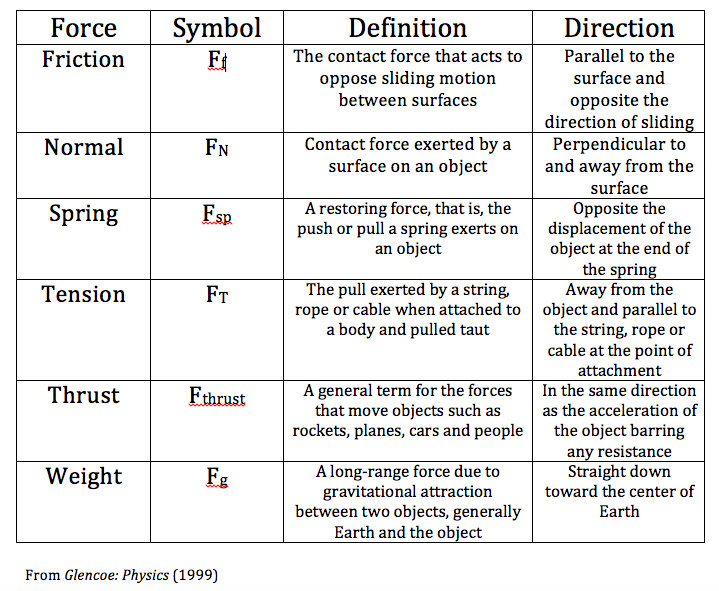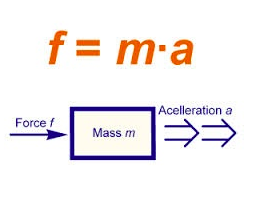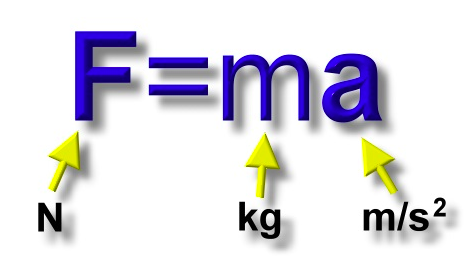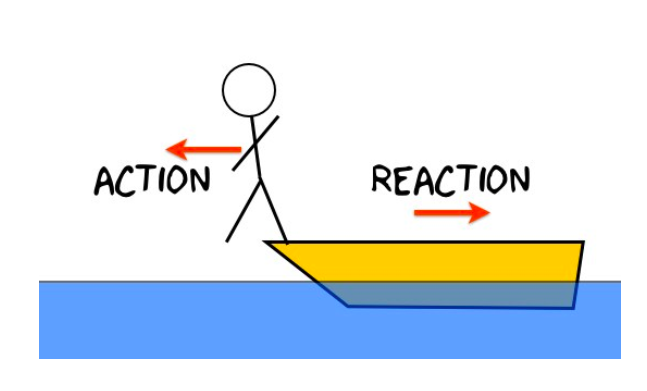Housekeeping: We are now investigating forces and Newton's Laws. Your last test over this material is May 23.
Content Review: Physics Classroom Physics Hypertextbook
Uniform & Accelerated Motion Velocity-Time Graphs
Readings: Physics Hypertextbook, 2.1, 2.2, 2.3, & 2.6 Glencoe: Forces
Student Missions:
Mission 1: It's All Newton's Fault
Mission Objectives: You should be able to...
1. Define "force" and differentiate between contact forces and long-range forces.
2. Recognize the significance of Newton's 2nd and use it to solve motion problems.
3. Explain the meanings of Newton's 1st and 3rd and provide examples.
4. Draw and explain free-body diagrams.
A force is a push or pull on a stationary object. There are two types: contact and long-range. Contact forces act on an object by touching it. Example: you touching your laptop. A long-range force is exerted without contact. Example: magnets and the force of gravity.
Uniform & Accelerated Motion Velocity-Time Graphs
Readings: Physics Hypertextbook, 2.1, 2.2, 2.3, & 2.6 Glencoe: Forces
Student Missions:
Mission 1: It's All Newton's Fault
Mission Objectives: You should be able to...
1. Define "force" and differentiate between contact forces and long-range forces.
2. Recognize the significance of Newton's 2nd and use it to solve motion problems.
3. Explain the meanings of Newton's 1st and 3rd and provide examples.
4. Draw and explain free-body diagrams.
A force is a push or pull on a stationary object. There are two types: contact and long-range. Contact forces act on an object by touching it. Example: you touching your laptop. A long-range force is exerted without contact. Example: magnets and the force of gravity.
How to draw a free-body diagram.
How to calculate the net force using free-body diagrams.
Newton's Laws of Motion.
1st: An object at rest will remain at rest unless acted upon by a force, or an object that is in motion will continue to move in a straight line unless acted upon by a force. Example:
A soccer ball sitting on the pitch will not move unless it is kicked. A car in motion will remain in motion until it is acted upon by a force. This law is commonly called the law of inertia. Inertia is the tendency of an object to resist change. If the net force on an object is zero, then the object is in equilibrium. Below is a table showing the different kinds of forces.
How to calculate the net force using free-body diagrams.
Newton's Laws of Motion.
1st: An object at rest will remain at rest unless acted upon by a force, or an object that is in motion will continue to move in a straight line unless acted upon by a force. Example:
A soccer ball sitting on the pitch will not move unless it is kicked. A car in motion will remain in motion until it is acted upon by a force. This law is commonly called the law of inertia. Inertia is the tendency of an object to resist change. If the net force on an object is zero, then the object is in equilibrium. Below is a table showing the different kinds of forces.
2nd: Force = mass X acceleration. The larger the force, the greater the acceleration. As mass increases, the greater the force required to move the object.
1st image: bitlanders.com 2nd image: zonaleducation.com
1st image: bitlanders.com 2nd image: zonaleducation.com
3rd. An interaction pair is two forces that are in opposite directions and have equal magnitude. All forces come in pairs, act on different objects and are equal in magnitude and opposite direction. See the image below. The action of stepping off the boat is equal to the reaction of the boat moving backwards.
Image from wired.com
Image from wired.com




 RSS Feed
RSS Feed